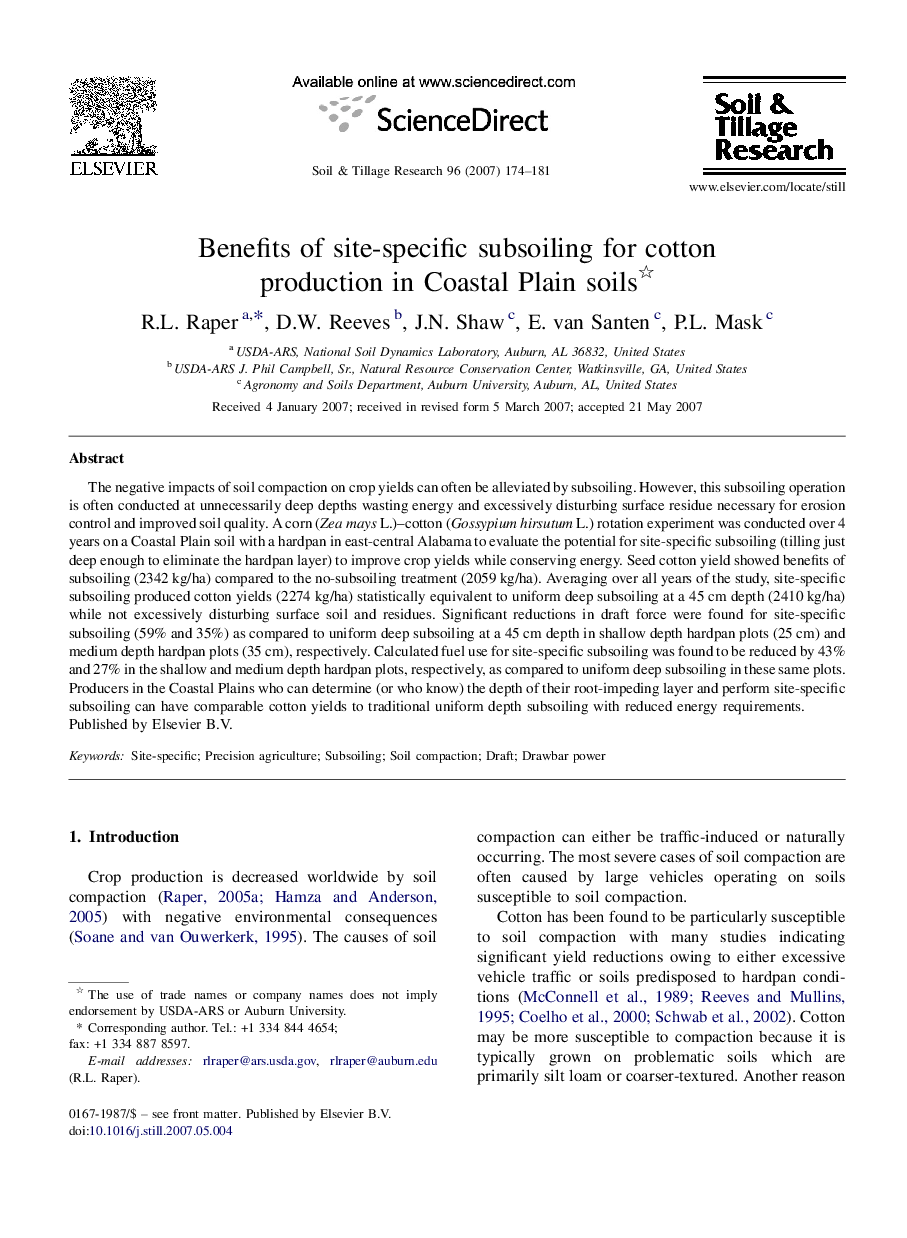| Article ID | Journal | Published Year | Pages | File Type |
|---|---|---|---|---|
| 306546 | Soil and Tillage Research | 2007 | 8 Pages |
The negative impacts of soil compaction on crop yields can often be alleviated by subsoiling. However, this subsoiling operation is often conducted at unnecessarily deep depths wasting energy and excessively disturbing surface residue necessary for erosion control and improved soil quality. A corn (Zea mays L.)–cotton (Gossypium hirsutum L.) rotation experiment was conducted over 4 years on a Coastal Plain soil with a hardpan in east-central Alabama to evaluate the potential for site-specific subsoiling (tilling just deep enough to eliminate the hardpan layer) to improve crop yields while conserving energy. Seed cotton yield showed benefits of subsoiling (2342 kg/ha) compared to the no-subsoiling treatment (2059 kg/ha). Averaging over all years of the study, site-specific subsoiling produced cotton yields (2274 kg/ha) statistically equivalent to uniform deep subsoiling at a 45 cm depth (2410 kg/ha) while not excessively disturbing surface soil and residues. Significant reductions in draft force were found for site-specific subsoiling (59% and 35%) as compared to uniform deep subsoiling at a 45 cm depth in shallow depth hardpan plots (25 cm) and medium depth hardpan plots (35 cm), respectively. Calculated fuel use for site-specific subsoiling was found to be reduced by 43% and 27% in the shallow and medium depth hardpan plots, respectively, as compared to uniform deep subsoiling in these same plots. Producers in the Coastal Plains who can determine (or who know) the depth of their root-impeding layer and perform site-specific subsoiling can have comparable cotton yields to traditional uniform depth subsoiling with reduced energy requirements.
